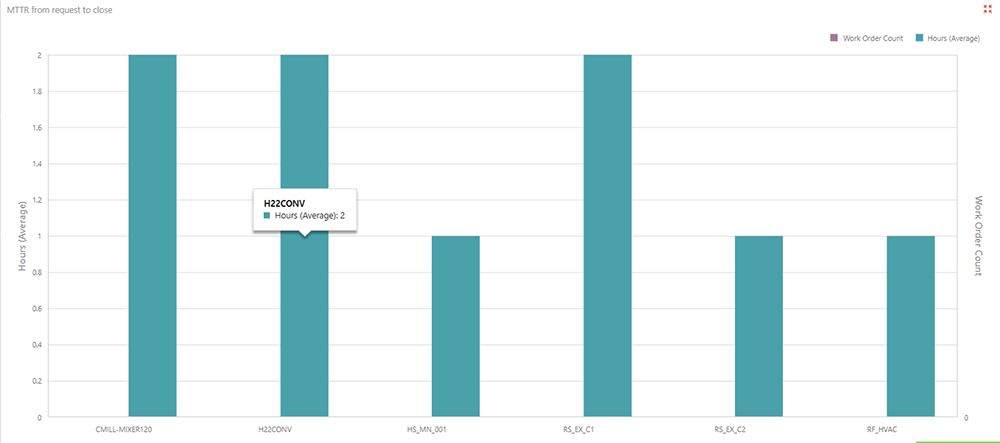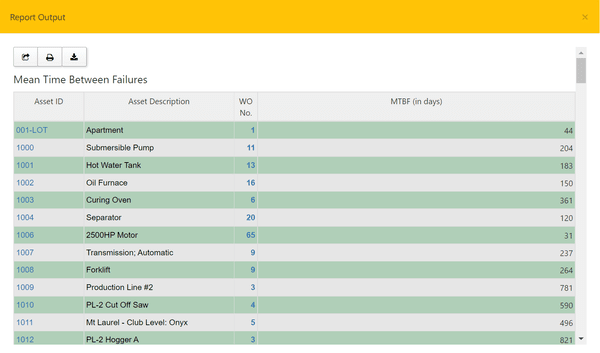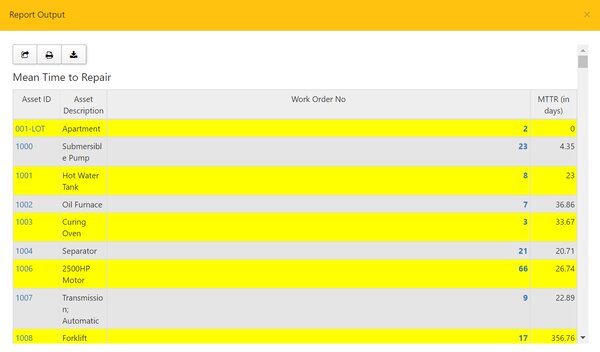The Role of MTBF, MTTF, and MTTR in Maintenance Performance Metrics
Mean time between failure (MTBF), mean time to failure (MTTF), and mean time to repair (MTTR) are three commonly used maintenance key performance indicators (KPIs). Each of these particular maintenance KPIs acts as a lagging indicator that provides insight into past events. In contrast, leading indicators enable proactive measures and help with predicting future events.
Maintenance KPIs help organizations track performance related to strategic goals and objectives. The information lets maintenance professionals unravel process problems, facilitate data-driven decision-making, and make adjustments specific to the findings.
However, maintenance leaders can choose from hundreds of maintenance KPIs beyond MTBF, MTTR, MTTF. Before deciding which ones to formulate, organizations should start with the basics.
Questions to Ask Before Formulating Maintenance KPIs
- What are the objectives?
- How will they be achieved?
- Who will act on the data?
A computer maintenance management system (CMMS) can help track maintenance KPIs and enable automated progress reports based on the stored data. A robust CMMS can be configured to fit how an organization wants to calculate its unique MTTR, MTBF, and MTTR data.
These results help reliability professionals optimize maintenance programs and processes and implement predictive strategies like condition-based maintenance (CBM). CBM lets maintenance teams pinpoint when an asset needs attention more effectively, and when paired with KPIs, gives an extra boost to achieving an organization’s objectives.

What is Mean Time Between Failure (MTBF)?
All machines will eventually fail. Mean time between failure (MTBF) depicts the expected time between two failures for a repairable system. Simply put, MTBF predicts how long a piece of equipment operates without disruption. MTBF is one of the most efficient maintenance KPIs for analyzing asset reliability and forecasting future performance. So, the goal is to try to keep the MTBF as high as possible making the system more reliable.
Benefits of Tracking MTBF:
- Optimize preventive maintenance scheduling
- Predict how often failures will occur during production
- Enables estimates on when an asset might fail or need replacing
- Improve inventory and parts availability
How do you Calculate MTBF?
You can calculate MTBF by taking the total time a machine is running (uptime) and dividing it by the number of breakdowns during that same period.
MTBF = Total uptime ÷ number of failures
What is Mean Time to Failure (MTTF)?
Mean time to failure (MTTF) measures equipment reliability and the time between one failure and the next. It is the mean time anticipated until the machinery or component fails and needs to be replaced. MTTF applies only to non-repairable assets, i.e., machinery that either cannot or should not be repaired, such as a light bulb.
Lengthening MTTF times can significantly impact the bottom line by minimizing operational disruptions, maximizing asset lifecycles, and enabling more effective operations and maintenance decision-making. Likewise, shorter MTTF times can cause missed orders, unfulfilled business objectives, or dampen the organization’s reputation.
Benefits of Tracking MTTF
- Determine the asset’s reliability based on measurements
- Make data-driven, objective repair or replace decisions
How do you Calculate Mean Time to Failure (MTTF)?
Calculate mean time to failure (average time to failure) by dividing the total number of hours of operations by the total number of machines in use.
MTTF = Total number of hours ÷ total number of machines in use
What is Mean Time to Repair (MTTR)?
Mean time to repair (MTTR) measures the maintainability of repairable machines and components. It calculates the average time to fix a failed asset, including the time it takes to test and diagnose. MTTR can help reliability leaders see how much time technicians take to repair a specific machine and examine why a particular repair takes more time than expected. The goal is to keep MTTR as short as possible to reduce equipment downtime.
Maintenance operations can reduce MTTR by analyzing their maintenance metrics and repair processes to determine where and how to lower repair times and optimize the process by standardizing preventive maintenance tasks.
How do you Calculate MTTR?
Calculate mean time to repair by adding up how much time was spent on a repair divided by the number of repairs.
MTTR = Total time spent on repairs ÷ number of repairs
Benefits of Tracking MTTR
- Understand the operation’s capacity to react to failures
- Identify frequent repair instances and plan accordingly
- Measure against previous MTTR to shorten downtime
What is the relationship between MTTF and MTBF?
The relationship between MTTF and MTBF centers on their application to different types of systems. MTTF is used for non-repairable systems, indicating the average time until a system fails permanently and requires replacement. Conversely, MTBF is used for systems that are expected to be repaired and returned to service, reflecting the average time between failures. In scenarios where failures always result in replacements, MTTF can be analogous to MTBF, highlighting their conditional interchangeability.
What is the Difference between MTTF vs MTBF?
Though they serve different purposes, MTTF (Mean Time To Failure) and MTBF (Mean Time Between Failures) are key reliability metrics. MTTF is used for non-repairable systems, measuring the average time until a system fails and must be replaced. MTBF applies to repairable systems, quantifying the average time between one failure and the next. These metrics help in planning maintenance strategies and improving system reliability.
What is the MTBF and MTTF Calculation?
MTBF (Mean Time Between Failures) and MTTF (Mean Time To Failure) calculations are essential metrics for system reliability. MTBF is calculated by dividing the total operational time by the number of failures, providing insight into the average time between system failures. Conversely, MTTF measures the average operational lifespan of non-repairable systems by dividing the total operational time by the number of devices, offering a snapshot of expected device longevity.
How do you calculate MTTF from MTBF?
Calculating MTTF (Mean Time To Failure) from MTBF (Mean Time Between Failures) is not directly feasible as these metrics apply to different types of systems—non-repairable and repairable, respectively. However, in theoretical terms, MTTF can be considered equivalent to MTBF for components that are not repaired. To use MTBF data for such a conversion, one must assume all system failures lead to replacements rather than repairs.


